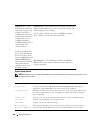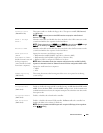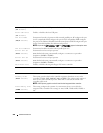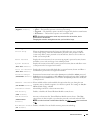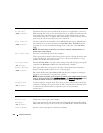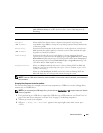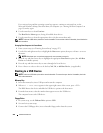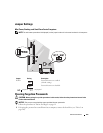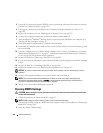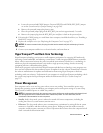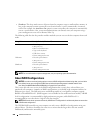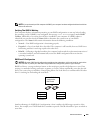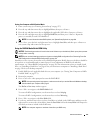
264 Advanced Features
If you wait too long and the operating system logo appears, continue to wait until you see the
Microsoft Windows desktop, then shut down your computer (see "Turning Off Your Computer" on
page 19) and try again.
4
Use the arrow keys to select
Continue
.
The
Boot Device Menu
appears, listing all available boot devices.
5
Use the arrow keys to select the appropriate device (for the current boot only).
NOTE: To boot to a USB device, the device must be bootable. To ensure that a device is bootable, check the device
documentation.
Changing Boot Sequence for Future Boots
1
Enter system setup (see "Entering System Setup" on page 257).
2
Use the left- and right-arrow keys to highlight the
Boot
menu option, then press <Enter> to access
the menu.
NOTE: Write down your current boot sequence in case you want to restore it.
3
Press the up- and down-arrow keys to highlight the appropriate
Boot Device
option (
1st
-
4th
Boot
Device
are available options).
4
Press the up- and down-arrow keys to move through the list of devices.
5
Press <Enter> to select a device to be the
1st
,
2nd
,
3rd
, or
4th
Boot Device
, (as applicable).
Booting to a USB Device
NOTE: To boot to a USB device, the device must be bootable. To ensure that your device is bootable, check the
device documentation.
Memory Key
1
Insert the memory key into a USB port and restart the computer.
2
When
F12 = Boot Menu
appears in the upper-right corner of the screen, press <F12>.
The BIOS detects the device and adds the USB device option to the boot menu.
3
From the boot menu, select the number that appears next to the USB device.
The computer boots to the USB device.
Floppy Drive
1
In system setup, set the
Diskette Drive
option to
USB
.
2
Save and exit system setup.
3
Connect the USB floppy drive, insert a bootable floppy, and re-boot the system.





